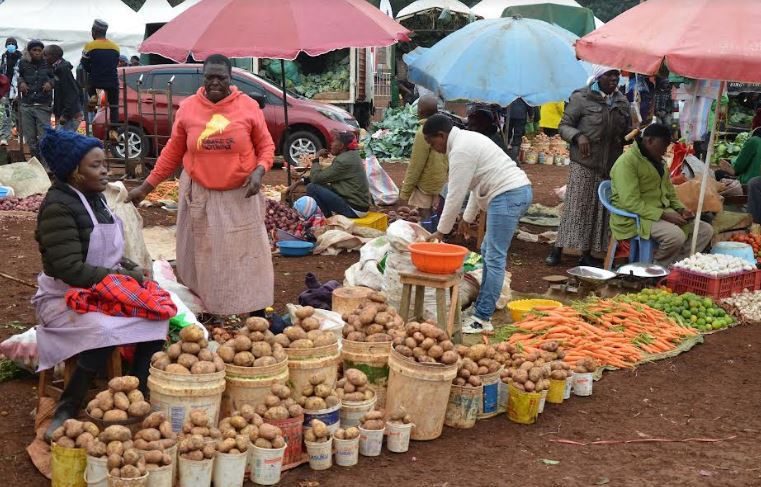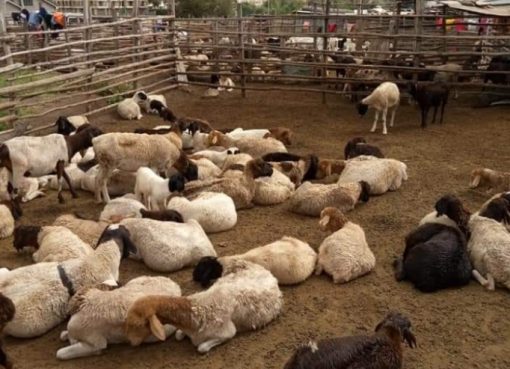Most farmers in Kitui County have recorded bumper harvests in the recent past two rainy seasons, which has resulted in a price decrease of farm food produce.
The recent rainy seasons in October to December last year and this year’s March to May led to high crop yields, leading to an increase in the supply of farm food commodities to local food markets and other outlets.
A survey done this week by Kenya News Agency on a few selected farm food markets and other outlets in the county revealed that traders of farm food commodities have been recording low sales and a massive reduction in the prices of locally produced food commodities since January this year.
“With a successful rain season and high crop yields, local residents who double as farmers and our customers have turned into our cereal suppliers, thus resulting in increased supply while also reducing demand,” said the local cereals and other farm food traders.
Consequently, the bumper harvest received consecutively for the last two seasons have reduced the cost of living for the local residents who faced starvation before the start of last year’s October to December rain season and the current March to May rain season.
KNA further revealed a continuous, noticeable decline in farm food sales and increased pressure on the traders to keep reducing food prices in efforts to attract customers, despite the traders own financial strains for the same.
Faith Katuku, a vegetable trader at Kalundu food market in Kitui township, while speaking to KNA, lamented on low sales due to lack of customers.
Faith, who is a mother of three children and has been a trader at the market for more than eight years, sells various farm food products, including potatoes, tomatoes, onions, cabbage, bananas, and apples.
She highlighted the drastic and continuous reduction of the prices of farm food commodities and the low demand for the products.
“Before the onset of last year’s rain season, a bag of 90 kg of potatoes was selling for between Sh4,500 to Sh5,000, and tomatoes for Sh150 per kilogram. However, upon the arrival of the rains, their prices have significantly continued to go down and are currently at less than Sh3,000 and Sh50, respectively,” said the trader.
“I am forced to keep on reversing downwards the prices of the food commodities to attract customers who are also complaining of harsh economic conditions that have affected their purchasing power, thus negatively affecting their standard of living,” she added.
Faith further attributed the continuous low demand and poor returns of her sales since the beginning of this year to the availability of homegrown farm produce, which has led to adequate farm food products received by local farmers who double as their customers.
Jennifer Mwende, 46 years old, who is also a trader at the market and deals in cereals both at retail and wholesale levels, echoed similar concerns made by Faith.
“Before the onset of last year’s rain season, demand for cereals was high, and prices were higher for most cereals. I used to sell more than three bags of a 90-kg bag of maize within a week. During market days that are on every Monday and Thursday, I used to make substantial profits, but nowadays it is a different story as I hardly manage to sell a single bag of 90 kg of maize,” Jennifer lamented.
She explained that she gets her supply of the maize from Busia at Sh2,800 per 90-kg bag and sells it for Sh3,200, translating to a profit of Sh400.
Like Faith and Jennifer, other traders have also attributed the low demand for the cereals to their customers’ reduced purchasing power and farm food owing to the bumper harvest received during the recent past two rain seasons in the county.
“Our customers are also struggling with the high cost of living of other non-farm food commodities and are forced to adjust in order to live within their means. Therefore, I am also made to sell my products at a reduced price to attract customers and to avoid losses due to spoilage,” the traders regretted.
The cereal traders further added that the same problem affecting the maize also extends to other cereal products, including beans and rice, with a 25-kg bag of rice costing Sh3,150.
Other farm food commodities whose prices have declined include Prices of onions have gone down from January’s sale price of Sh160 per one kilogramme to the current price of Sh130.
The price of garlic has also come down from Sh600 per kilo to Sh500.
Food commodities such as green grams have fallen in price, from Ksh 200 per kilogramme in September last year, before the start of the October-December rain season, to Sh 100 today.
One kilogramme of millet and sorghum have also been reduced from January’s sale prices of Sh80 and Sh90 to current prices of Sh60 and Sh75, respectively.
Most of the traders at the Kalundu and other local markets explained that their customers have opted to enjoy the fruits of their farms’ labour, hence consuming their homegrown food, while also selling some to buy other basic needs.
A local farmer, Joseph Musyoka, who is a retired public officer whom the Kenya News Agency caught up with while supplying his freshly harvested green maize to a trader at Kalundu market, said he primarily relies on farming.
“I rely on farming for my income, and thanks for receiving enough rains, for I am now reaping the rewards of my hard work at my farm following the end of the successful previous two rain seasons,” he said.
“I have a farm where I plant various types of vegetables and various types of cereals, such as maize, beans, cowpeas, and pigeon peas, among others. I therefore don’t have to go to the market to buy vegetables since I have fresh produce in my garden,” said Mary Ndunge, another resident and farmer, while speaking to KNA.
Mary proudly expressed her satisfaction, saying plucking a ripe tomato or fresh kale leaves from her shamba is remarkable.
The ongoing economic hardship has left many vendors and traders of farm food commodities in the local county in a precarious position. They face the dual challenge of maintaining their livelihoods while accommodating the financial limitations of their customers. As the rainy season comes to an end, these vendors hope for an improvement in sales to mitigate potential losses.
This situation highlights the broader economic struggles faced by both sellers and buyers in Kitui Town. The cost-of-living crisis is not just a personal issue for individual households but a community-wide challenge that impacts the local economy’s stability.
Both traders and customers in Kitui County are eagerly awaiting the end of the rainy season. Traders hope that the market dynamics will improve, allowing them to sell their products at better prices and avoid losses. Customers, on the other hand, are looking forward to more affordable prices and better purchasing power in anticipation of an improved economy.
By Rose Paul and Chris Mumo





